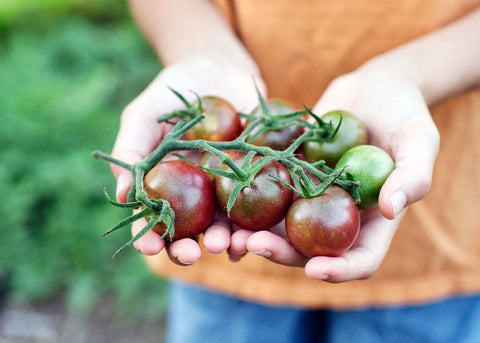
Seeds are a mysterious miracle of nature. Tiny and often unassuming. When you look at them in the palm of your hand, it’s hard to imagine how they can become beautiful, vibrant plants with flowers and delicious fruits. But to get there, seeds need to be coaxed into germinating.
Five factors that affect a seed’s ability to germinate

WATER
Water plays a critical role in the miracle of seed germination. The outer layer on a seed, called the seed coat, protects against diseases and slows water penetration and premature germination. But, without an adequate and continuous supply of water, germination will not occur, or will be delayed…which can be a form of stress negatively affecting the health of the seedlings. Wet the soil starting mixture with warm water and fill your cells/pots. Place containers in a pan with 1" of warm water and allow soil to to become moist through bottom watering. When the soil is saturated, set the containers aside to drain. Or, use a fine-mist sprayer to avoid displacing seeds.
TEMPERATURE
The importance of a proper soil temperature for seed starting cannot be overemphasized. Maintaining an ideal temperature not only affects the number of seeds that will germinate but also how quickly they begin to emerge as seedlings. Many seeds will have minimum, maximum and optimum temperatures for germination. Be sure to reference the back of our seed packets or the “growing tips” tab on our website under each product for this information. Keep in mind, these temperatures are soil temperatures, not the air, since the seed is in contact with the growing medium. Generally, most plants will germinate best in the 65 to 75°F range. Using a plastic dome, saran wrap or plastic bag over planting containers will help to raise the soil temperature and keep it moist, like a mini greenhouse. Even better, heat mats can be used to maintain proper temperatures. Radiators can also be used.
LIGHT
Some seed varieties require light for germination. Although, most seed will germinate with or without exposure to light. A few crops that need light for germination are lettuce, columbine, snapdragon and lavender. If these seeds are completely covered with soil, it’s likely they will struggle to germinate. Gently press seeds into the soil and keep moist, just as nature intended. If they are covered at all, use only a dusting of fine peat moss or fine vermiculite. When starting seed indoors in your home, lighting can be provided by florescent lights, or specialty grow lights, approximately 4 inches above the seeds for 16 hours a day.

OXYGEN
Respiration takes place in all germinating seed. The soil medium in which seeds are planted should be loose and well aerated, which will provide sufficient oxygen. If the soil is compacted, the oxygen supply available will be reduced, resulting in inhibited or retarded seed germination.
SOIL QUALITY
Do not use garden soil by itself to start seedlings. It is not sterile, it is heavy and may not drain well. Young seedlings are very susceptible to disease. And, since most of these diseases are soil borne, the best way to keep your seedlings healthy is to use a sterilized seed starting mixture, or coconut coir blocks, rather than garden soil. These can be easily found at your local garden center. Or, you can make your own mixture by using vermiculite and shredded sphagnum peat moss. After the first leaves have appeared, begin applying with a diluted fertilizer.

The moment when a tiny seed sprouts and becomes part of something much bigger than itself, is one of nature’s miracles. To ensure successful germination and growth it's important to understand these five factors that influence seed development - water availability, temperature range, light requirements, oxygen and soil quality - so you can create favorable conditions for your seeds. With careful consideration and attention to detail, your plans for a bountiful garden could turn into reality.




